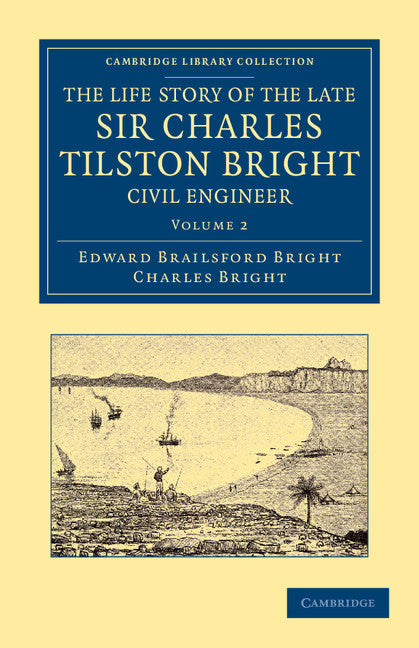Freshly Printed - allow 8 days lead
Couldn't load pickup availability
The Life Story of the Late Sir Charles Tilston Bright, Civil Engineer
With Which is Incorporated the Story of the Atlantic Cable, and the First Telegraph to India and the Colonies
Published in 1898, a two-volume biography of a Victorian electrical engineer who was an early pioneer in submarine cable telegraphy.
Edward Brailsford Bright (Author), Charles Bright (Author)
9781108052894, Cambridge University Press
Paperback / softback, published 5 July 2012
720 pages, 83 b/w illus.
21.6 x 14 x 4 cm, 0.9 kg
Sir Charles Tilston Bright (1832–88) was a renowned telegraph engineer, best known for his role in laying the first successful transatlantic cable in 1858, for which he was knighted. Bright later worked on the telegraph networks that would span not only the British Empire but the entire globe. Written by his brother Edward Brailsford Bright (1831–1913) and son Charles (1863–1937), both telegraph engineers who worked alongside him, this two-volume biography, first published in 1898, would do much to cement Bright's reputation as an electrical engineer, providing an insider account of telegraphy's formative years. Volume 2 traces Bright's work on the burgeoning telegraph network, laying imperial cables to the Mediterranean, India, the West Indies, and further afield. Bright's significant contributions to the field of electrical engineering are also acknowledged in these pages, along with his personal qualities and political pursuits.
1. The Mediterranean cables
2. 1860–3
3. The telegraph to India
4. The Greenwich election
5. 1865–99
6. West India cables
7. 1873–4
8. Land telegraphs
9. Mining
10. The fire alarm
11. Telephony
12. Electric lighting
13. Railways
14. Various evidence and reports
15. The Paris Exhibition
16. The Institute of Electrical Engineers
17. Colleagues and pupils
18. Volunteering
19. Freemasonry
20. The Needlemakers Company
21. Home life and recreations
22. Death and funeral
23. Summary
Appendices
Index.
Subject Areas: History of engineering & technology [TBX]


